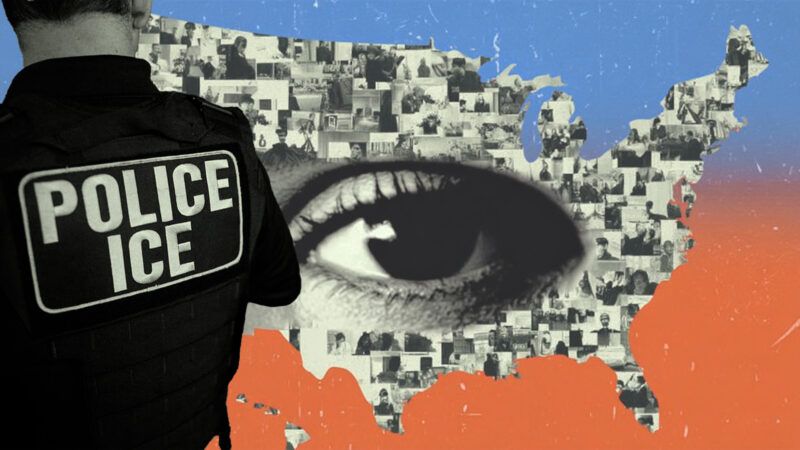ICE Is Mounting a Mass Surveillance Campaign on American Citizens
Without strict oversight, the agency’s new technology threatens Americans’ free speech and privacy.

While a federal judge scrutinizes the constitutionality of tactics used by federal immigration authorities during ongoing protests in Chicago, these same agencies are quietly amassing behind-the-scenes surveillance technology. Originally slated to target undocumented immigrants, the technology is now being used to investigate protesters of President Donald Trump's mass deportation campaign.
Backed by funding from the One Big Beautiful Bill Act passed in July, Immigration and Customs Enforcement (ICE) has entered into contracts with companies to provide surveillance capabilities like facial recognition algorithms, an iris-scanning identification app, controversial spyware on smartphones, and a real-time smartphone location and social media tracking system. In September alone, ICE racked up $1.4 billion in new surveillance technology contracts, the highest in at least 18 years, according to The Washington Post.
These contracts are in addition to any privately owned surveillance networks to which ICE has access. Flock Safety, for example, has allowed ICE to access over 80,000 of its AI-powered license plate reader cameras installed nationwide, according to 404 Media. The expansive—and growing—mass surveillance camera network captures the license plate number, make, model, and any distinctive features of all passing vehicles, making it possible to track cars and, by extension, drivers, often without a warrant.
Although ICE has sold its surveillance campaign as necessary to locating and deporting undocumented immigrations, the Trump administration has signaled that the technologies will also be used on American citizens. In September, Trump signed an executive order designating antifa a domestic terrorist organization and signaled that federal agencies, including ICE, should devote resources to investigating the network. Todd M. Lyons, acting director of ICE, told Glenn Beck during an interview shortly after the executive order was signed that the agency would "track the money," "ringleaders," and "professional agitators" who are "being brought in" from outside the Chicago area to protest against immigration enforcement. But whether from Chicago or elsewhere, protester or "domestic terrorist," constitutional rights and limitations still apply, although adherence by federal agencies is being questioned.
Critics of mass surveillance have long warned that intrusive technologies could be used to violate Americans' privacy rights. "We don't know if law enforcement or ICE are getting search warrants to deploy this spyware," Maria Villegas Bravo, counsel for the Electronic Privacy Information Center, told the Post. "It's also a First Amendment issue because your phone contains all your communications, all your expressions…it has your contact lists, it has your social media. Any political organizing people do," she continued, is "typically on social media now, or over the phone."
The expansion of tracking and surveillance technology deployed by ICE coincides with the Trump administration's crackdown on services used by the public to share information about federal immigration enforcement. Since early October, the Justice Department has successfully pressured social media platforms, including Meta, Apple, and Google, to remove online groups and apps that share where ICE and other immigration agents have been sighted. Although private companies are not governed by the First Amendment and are free to set their own rules about acceptable speech, it is extremely concerning that the federal government would use its power and influence to blatantly interfere with Americans' otherwise protected free speech.
The courts and public are right to worry about the constitutional violations taking place in plain view by immigration agents during protests and enforcement operations, and officers must be held accountable. But those same actors must also be held responsible for the privacy violations that are less obvious and happening behind the scenes.


Show Comments (96)